Posted September 16, 2024 by Nicky in Reviews / 0 Comments
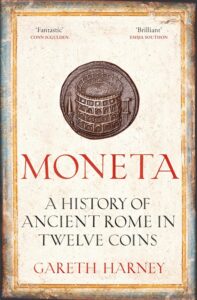
Moneta: A History of Ancient Rome in Twelve Coins
Genres: History,
Non-fiction Pages: 384
Rating: 
Synopsis: The extraordinary story of ancient Rome, history's greatest superpower, as told through humankind's most universal object: the coin.
Moneta traces ancient Rome's unstoppable rise, from a few huts on an Italian hilltop to an all-conquering empire spanning three continents, through the fascinating lives of twelve remarkable coins. In these handcrafted pieces of ancient art we witness Caesar's bloody assassination, follow the legions to the edge of the known world, take a seat in the packed Colosseum, and ultimately, watch as barbarian armies mass at the gates.
The Romans saw coins as far more than just money - these were metal canvases on which they immortalised their sacred gods, mighty emperors, towering monuments, and brutal battles of conquest. Revealed in those intricate designs struck in gold, silver, and bronze was the epic history of the Roman world.
Hold the glory and the infamy of ancient Rome in the palm of your hand.
I picked up Gareth Harney’s Moneta on a bit of a whim, and partly because it had Emma Southon’s endorsement on the cover, and I’ve really enjoyed her books. And indeed, Moneta is just as readable as Southon’s work, and I found it surprisingly engaging: coins in and of themselves aren’t that interesting to me, but using an object to interrogate a wider history is great.
One quibble, I suppose, inasfar as it matters, is that it’s not really just twelve coins. Each chapter mentions plenty of other coins. And I’d have loved more images of the coins, close to where they get discussed in the text — I’m no good at imagining what’s not in front of me, since I have no visual imagination at all.
Still, I found it a really engaging read. I’m not usually a fan of imaginative reconstructions, but Harney has a knack of storytelling that made them interesting (though of course one should take them with several pinches of salt). The coins and scenarios he chooses to highlight are fascinating, and worthwhile in understanding the Roman Empire.
I guess the ultimate accolade is that even though it’s non-fiction, I found it pretty unputdownable.
Rating: 4/5
Tags: book reviews, books, Gareth Harney, history, non-fiction
Posted September 9, 2024 by Nicky in Reviews / 0 Comments
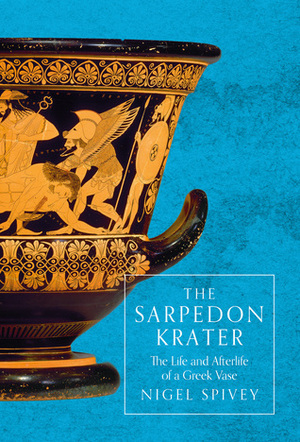
The Sarpedon Krater: The Life and Afterlife of a Greek Vase
Genres: History,
Non-fiction Pages: 240
Series: The Landmark Library Rating: 
Synopsis: Once the pride of New York's Metropolitan Museum of Art, the Sarpedon krater is a wine-mixing bowl crafted by two Athenians, Euxitheos (who shaped it) and Euphronios (who decorated it), in the late 6thc BC. The moving image Euphronios created for the krater, depicting the stricken Trojan hero Sarpedon being lifted from the battlefield by ‘Sleep’ (Hypnos) and ‘Death’ (Thanatos), was to have an influence that endured well beyond Antiquity.
Nigel Spivey not only explores the vibrant Athenian civilization that produced the krater, but also reveals how its motifs were elaborated in later Greek art and in the Christian iconography of the Renaissance.
He tells the story of a small object, once consigned to the obscurity of an Etruscan tomb – yet a work of art whose influence extends far beyond its size and former confinement. The Sarpedon Krater is a fascinating case-study of the deep classical roots of the ideas and iconography of western art.
Nigel Spivey’s The Sarpedon Krater is part of a series about “landmarks” in world history and art. Obviously that’s a bit of a metaphor when we’re discussing this mixing bowl, since it’s not a landmark in the same way as Stonehenge is — but in metaphorical terms, it seems it (or at least the themes on it) really was a landmark. Spivey discusses not just the origin of the vase, the artist and their context, but also the afterlife, including the burial in an Etruscan tomb, the looting, and the sale to a museum, along with its brief involvement in the Marion True saga. It also discusses how the motifs may have been copied by — or at least influenced — later artists.
I didn’t know much about this specific object before I started, though I knew a certain amount about symposia, Greek vases, etc, so this filled in some interesting gaps. It’s beautifully illustrated, with close-ups of the krater and other artwork that’s related in some way.
In the end, I don’t know how to evaluate Spivey’s claims about how influential this art was, but it does all hang together pretty well and make sense as an argument — and regardless of that, I enjoyed the contextualisation of the krater and its afterlife.
Rating: 4/5
Tags: book reviews, books, history, Nigel Spivey, non-fiction
Posted September 2, 2024 by Nicky in Reviews / 2 Comments
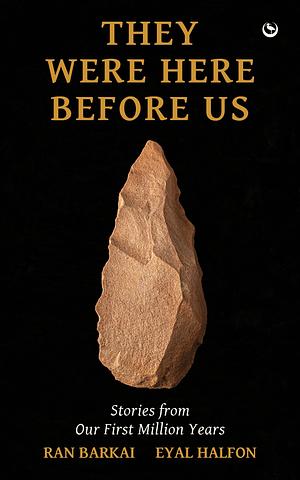
They Were Here Before Us: Stories from Our First Million Years
Genres: History,
Non-fiction,
Science Pages: 208
Rating: 
Synopsis: An epic and highly readable investigation into our very earliest ancestors, focusing on the land corridor thorough which humans passed from Africa to Europe and the evidence left behind of their lives and deaths, struggles and beliefs.
This is not a book about archaeological sites. We shall come across flint tools, bones, skulls, surprising structures, and layers of earth that we can date to different periods—but they are not the heart of the matter. This book is about us, human beings, and about our place in the world. About what we have done, where we came from, which other humans used to be here, why they are no longer with us, and how and why our lives have changed. It’s also about where we went wrong. What did early humans do because they had no choice and what is the price we paying for this now?
Taking as the focus ten sites in Israel, the land corridor through which the human species passed on its journey from Africa to Europe, the story ranges far and wide from France, Spain, Turkey and Georgia to Morocco and South Africa, North America, Columbia and Peru. The authors follow the footsteps of our ancestors, describing the tools they used, the animals they hunted and the monuments they built. Fascinating revelations include:
- The earliest evidence of human use of fire;
- The meaning of cave art and the transformative effect of touching rock;
- The woman for whom 90 tortoises were sacrificed;
- What happened in the Levant following the disappearance of elephants;
- The monumental tower built at the lowest place on earth;
- Why we should envy modern hunter-gatherers – and much more ...
This provocative and panoramic book shows readers what they can learn from their ancestors, and how the unwavering ability of prehistoric people to survive and thrive can continue into the present.
There isn’t much in Eyal Halfon and Ran Barkai’s They Were Here Before Us that will come as much of a surprise if you’re already familiar with the stories of humanity’s origin, though they do mention a few new-to-me theories and go into some of the history of how things were discovered which I didn’t know. The broad strokes are familiar, but they write very clearly and explain things well. At times there’s a touch of the travelogue, because they describe visiting various of the sites as part of giving their context, but it’s not the main point of the narrative.
They do some imaginative reconstruction in the course of this, trying to figure out why people might have put a swan’s wing here or built a tower there, but I felt like they didn’t go wild: they presented these ideas as theories, as a way of understanding the data, and it’s pretty clear when they’re guessing and when they’re stating a fact.
The book doesn’t have numbered references, but it does have a solid bibliography including both books and papers, most of which look reasonably well-related to the topic to my eye (though this isn’t my field).
I found it enjoyable, and the translation (by Eylon Levy) is very readable.
Rating: 4/5
Tags: book reviews, books, Eyal Halfon, history, non-fiction, Ran Barkai, science
Posted August 26, 2024 by Nicky in Reviews / 3 Comments
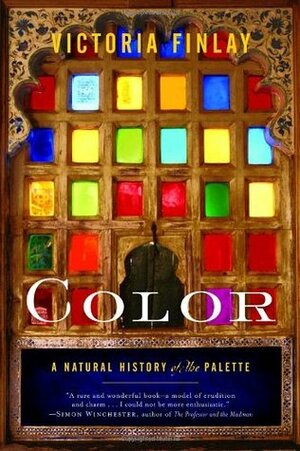
Colour: Travels Through the Paintbox
Genres: History,
Non-fiction,
Science Pages: 494
Rating: 
Synopsis: Discover the tantalizing true stories behind your favorite colors.
For example: Cleopatra used saffron—a source of the color yellow—for seduction. Extracted from an Afghan mine, the blue “ultramarine” paint used by Michelangelo was so expensive he couldn’t afford to buy it himself. Since ancient times, carmine red—still found in lipsticks and Cherry Coke today—has come from the blood of insects.
Victoria Finlay’s Colour: Travels through the Paintbox is an examination of dyes and pigments, rather than colour per se — there’s a bit of discussion of why we perceive colours the way we do, but not in depth. It’s more about how various pigments are mined or made, and it’s also part travelogue and part-memoir. The fact that Finlay couldn’t get coffee in Beirut because of Hafez al-Assad’s funeral is neither here nor there, as with the fact that she wore a broken boot to climb in and had to keep tying it together with string. The book could probably do without a great deal of this flavouring, since it slows it all down.
But, viewed as Finlay’s account of a personal quest to discover the origins of a handful of colours — neither exhaustive nor greatly in depth, in many ways — there’s definitely a lot of interest here: random facts, suggestive examples of tradition that may tell us something about how things used to be done, and an idea of how things are done now. Sometimes Finlay’s choices were more about some kind of personally satisfying quest than about really understanding a colour: were her quests for visas really about the colour, or about being able to say she’d visited a mine in Afghanistan?
I guess I feel a bit cynical about some of her motivations because I’m not the type who must necessarily go and see a thing to say I understand it. When she tried to pick saffron, that was an experience worth having to understand the process — but did she need to travel so far? Does one have to see the “original” place where indigo grew to understand indigo?
It’s very readable and full of anecdotes and imagination, to the point where I couldn’t really say it’s a good read to learn about colour. It’s a good read to understand someone else’s journey to personally discover the origins of a handful of pigments and dyes. It does have a bibliography and full footnotes, too, but primarily it’s about how Finlay feels about colour, and the stories she discovered (and liked enough to recount). That can be very enjoyable, it’s just worth bearing in mind.
Rating: 3/5
Tags: book reviews, books, history, non-fiction, science, Victoria Finlay
Posted August 23, 2024 by Nicky in Reviews / 0 Comments
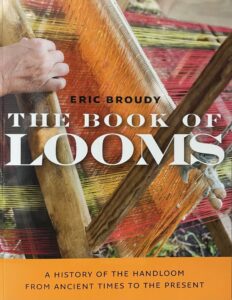
The Book of Looms: A History of the Handloom from Ancient Times to the Present
Genres: History,
Non-fiction Pages: 176
Rating: 
Synopsis: The handloom--often no more than a bundle of sticks and a few lengths of cordage--has been known to almost all cultures for thousands of years. Eric Broduy places the wide variety of handlooms in historical context. What influenced their development? How did they travel from one geographic area to another? Were they invented independently by different cultures? How have modern cultures improved on ancient weaving skills and methods? Broudy shows how virtually every culture, no matter how primitive, has woven on handlooms. He highlights the incredible technical achievement of primitive cultures that created magnificent textiles with the crudest of tools and demonstrates that modern technology has done nothing to surpass their skill or inventiveness.
It’s hard to rate Eric Broudy’s The Book of Looms as someone who doesn’t really understand weaving and has never handled a loom beyond idle curiosity. There are a lot of technical terms to remember, even when they’ve been defined in the text, and it’s also difficult for someone with aphantasia to visualise the descriptions of how things work mechnically.
That said, it’s very thorough, explains its suppositions, and includes a lot of diagrams and images (in black and white) to help illustrate the text and explain things. I expect for people interested in looms on a more than vague and theoretical level will get a lot more out of it.
I’m not in love with the word “primitive” used a few times, but Broudy does call out that these “primitive” looms were used by people who were perhaps more skilled at weaving than anyone living today. The looms may have seen technical advances, but the weavers were superlative. I did enjoy the titbits in between the technical details about the spread of weaving, how cloth was used, the reactions to new technology, etc.
So, not aimed at me, and for that I can’t rate it highly on enjoyment, but I’d feel bad giving it a low rating. I’m certain it’s good for those who’re interested in a more technical level.
Rating: 4/5
Tags: book reviews, books, Eric Broudy, history, non-fiction
Posted August 19, 2024 by Nicky in Reviews / 2 Comments
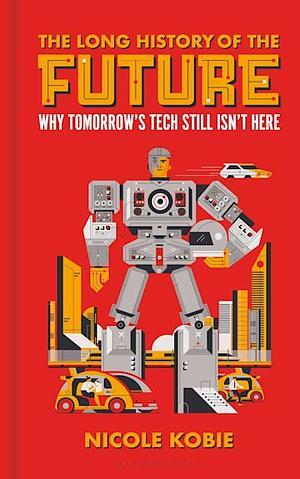
The Long History of the Future: Why Tomorrow's Tech Still Isn't Here
Genres: History,
Non-fiction,
Science Pages: 368
Rating: 
Synopsis: We love to imagine the future. But why is dramatic future technology always just around the corner, and never a reality?
For decades we've delighted in dreaming about a sci-fi utopia, from flying cars and bionic humans to hoverboards; with driverless cars first proposed at the 1939 World's Fair. And why not? Building a better world, be it a free-flying commute or an automated urban lifestyle is a worthy dream. Given the pace of technological change, nothing seems impossible anymore. But why are these innovations always out of reach?
Delving into the remarkable history of technology, The Long History of the Future also looks at what lies ahead, showing how the origins of our technology may provide insight into how it realistically evolves. You may never be able to buy a fully driverless car, but automated braking and steering could slash collision rates. Smart cities won't perfect city life, but they could help bins be emptied on time. Hyperloops may never arrive, but superfast trains could fill the gap.
Looking to the future, Nicole Kobie demonstrates how despite our belief that current technology is the best it could ever be, the future always proves us wrong, and there is much to look forward to.
Nicole Kobie’s The Long History of the Future looks at the kind of things that we feel we’ve been promised by visions of the future, and why they’re still so far in the future — flying cars, self-driving cars, robot butlers, true AI, etc. Most of these are not my subject, so it’s hard to evaluate on those terms, but Kobie’s explanations make good sense, and make mention not just of physical constraints but also other things like legislative and practical issues. For example… do you really want flying cars passing by your windows every couple of minutes? How would the noise issues be handled? How would flight paths be handled?
In general, I’m not myself super interested in flying cars or robot butlers, cool as it sounds on paper, but I enjoyed Kobie’s exploration of why those things aren’t ready yet, and why they’re harder than they look. I was reassured that she wasn’t all-in on AI, though I could’ve stood to see her be even more critical of things like the environmental impact and copyright theft.
I flagged a bit toward the end of the book, as sometimes it felt like there was a bit of padding — did we really need to hear a blow-by-blow of an event in which students showed off their model hyperloop designs, which didn’t work because the batteries were flat? But overall it was interesting.
Rating: 3/5
Tags: book reviews, books, history, Nicole Kobie, non-fiction, science
Posted August 15, 2024 by Nicky in Reviews / 8 Comments
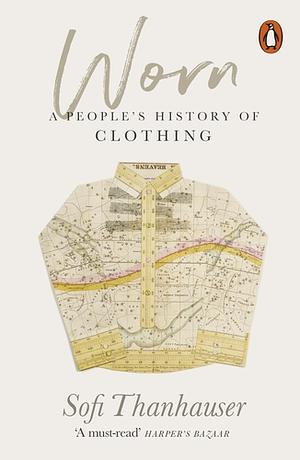
Worn: A People's History of Clothing
Genres: History,
Non-fiction Pages: 393
Rating: 
Synopsis: Linen, Cotton, Silk, Synthetics, Wool: through the stories of these five fabrics, Sofi Thanhauser illuminates the world we inhabit in a startling new way, travelling from China to Cumbria to reveal the craft, labour and industry that create the clothes we wear.
From the women who transformed stalks of flax into linen to clothe their families in nineteenth century New England to those who earn their dowries in the cotton-spinning factories of South India today, this book traces the origins of garment-making through time and around the world. Exploring the social, economic and environmental impact of our most personal possessions, Worn looks beyond care labels to show how clothes reveal the truth about what we really care about.
Sofi Thanhauser’s Worn is definitely a people’s history of clothing, and really more a history of fabric production than of clothing per se. There are so many points in clothing’s life cycle that Worn doesn’t even touch on, but it takes a good look at the production of fabrics like silk, cotton, linen, wool and synthetics: how they were first produced, how they’re produced now, their impact on the environment, and most of all their impact on the people who are involved in their manufacture, from the field to the factory.
I was hoping for something a bit more focused on clothing, rather than generally on fabric — I think there’s a meaningful distinction to be made between a history specifically about clothes and a history about fabric, and this is decidedly the latter, when I was looking for the former.
That said, I did find it interesting and enjoyable, and Thanhauser clearly put in a lot of time to ensure she heard the voices of those making fabric. There’s plenty of people writing books about clothes, and fabric is definitely a worthy part of the story. I’d have just picked a different title and subtitle.
Rating: 4/5
Tags: book reviews, books, history, non-fiction, Sofi Thanhauser
Posted August 2, 2024 by Nicky in Reviews / 0 Comments
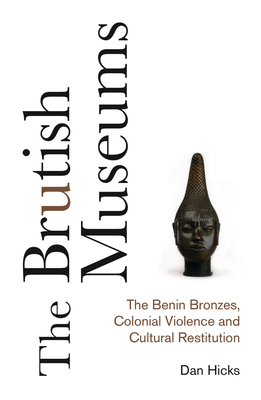
The Brutish Museums: The Benin Bronzes, Colonial Violence and Cultural Restitution
Genres: History,
Non-fiction Pages: 336
Rating: 
Synopsis: Walk into any European museum today and you will see the curated spoils of Empire. They sit behind plate glass: dignified, tastefully lit. Accompanying pieces of card offer a name, date and place of origin. They do not mention that the objects are all stolen. Few artefacts embody this history of rapacious and extractive colonialism better than the Benin Bronzes - a collection of thousands of metal plaques and sculptures depicting the history of the Royal Court of the Obas of Benin City, Nigeria. Pillaged during a British naval attack in 1897, the loot was passed on to Queen Victoria, the British Museum and countless private collections. The story of the Benin Bronzes sits at the heart of a heated debate about cultural restitution, repatriation and the decolonisation of museums. In The Brutish Museum, Dan Hicks makes a powerful case for the urgent return of such objects, as part of a wider project of addressing the outstanding debt of colonialism.
It’s difficult for me to evaluate Dan Hicks’ The Brutish Museums, since it’s not really my field and at times he gets quite technical and academic. It feels like the audience for this isn’t really clear: is it those who visit museums? Is it activists? It doesn’t quite feel like it’s other curators… As a result, that makes it a bit of an uneven read.
I’d been hoping for more detail about the actual Benin bronzes and how they’ve been displayed and discussed, but really this is about the wrong that’s been done — it could be about any kind of object displayed in a museum, it’s just an exemplar of a particularly egregious episode of looting, slaughter, and display of spoils.
It’s an interesting read, though it’s hard to know what to do with the information. It’s definitely a viewpoint worthy of thought, though: those who visit museums can be helping to perpetuate harm.
Rating: 3/5
Tags: book reviews, books, Dan Hicks, history, non-fiction
Posted July 26, 2024 by Nicky in Reviews / 0 Comments
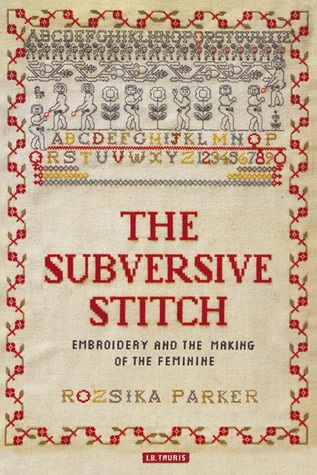
The Subversive Stitch: Embroidery and the Making of the Feminine
Genres: History,
Non-fiction Pages: 256
Rating: 
Synopsis: Rozsika Parker's now classic re-evaluation of the reciprocal relationship between women and embroidery has brought stitchery out from the private world of female domesticity into the fine arts, created a major breakthrough in art history and criticism, and fostered the emergence of today's dynamic and expanding crafts movements.
The Subversive Stitch is now available again with a new Introduction that brings the book up to date with exploration of the stitched art of Louise Bourgeois and Tracey Emin, as well as the work of new young female and male embroiderers. Rozsika Parker uses household accounts, women's magazines, letters, novels and the works of art themselves to trace through history how the separation of the craft of embroidery from the fine arts came to be a major force in the marginalisation of women's work. Beautifully illustrated, her book also discusses the contradictory nature of women's experience of embroidery: how it has inculcated female subservience while providing an immensely pleasurable source of creativity, forging links between women.
Rozsika Parker’s The Subversive Stitch is a pretty academic work, illustrated with lots of plates (though these are in black and white and not really of the greatest quality, at least in the edition I have. Parker’s thesis is basically that embroidery was a huge part of how femininity was constructed, particularly in the Victorian era, and we’ve seen a lot of things both deeper in the past and now through that lens.
No doubt there’s more up to date work now, but I’m under the impression this is a bit of a classic. It can be dry, especially if you’re not interested in the subject — as I mentioned, it really is pretty academic. But there are some fascinating insights here, and also some correctives to received wisdom about what exactly the history of embroidery has been like. Solid lesson: don’t believe a Victorian source, possibly not even about Victorian norms.
Perhaps more of interest to those interested in feminist and women’s history than to those interested in embroidery per se.
Rating: 4/5
Tags: book reviews, books, history, non-fiction, Rozsika Parker
Posted July 19, 2024 by Nicky in Reviews / 2 Comments
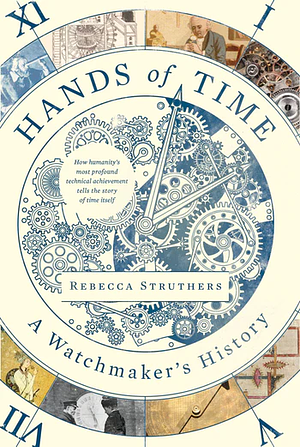
Hands of Time: A Watchmaker's History
Genres: History,
Non-fiction Pages: 288
Rating: 
Synopsis: Hands of Time is a journey through watchmaking history, from the earliest attempts at time-keeping, to the breakthrough in engineering that gave us the first watch, to today - where the timepieces hold cultural and historical significance beyond what its first creators could have imagined. Acclaimed watchmaker Rebecca Struthers uses the most important watches throughout history to explore their attendant paradigm shifts in how we think about time, indeed how we think about our own humanity. From an up-close look at the birth of the fakes and forgeries industry which marked the watch as a valuable commodity, to the watches that helped us navigate trade expeditions, she reveals how these instruments have shaped how we build and then consequently make our way through the world.
A fusion of art and science, history and social commentary, this fascinating work, told in Struthers's lively voice and illustrated with custom line drawings by her husband and fellow watchmaker Craig, is filled with her personal observations as an expert watchmaker--one of the few remaining at work in the world today. Horology is a vast subject--the "study of time." This compelling history offers a fresh take, exploring not only these watches within their time, but the role they played in human development and the impact they had on the people who treasured them.
Timepieces have long accompanied us on our travels, from the depths of the oceans to the summit of Everest, the ice of the arctic to the sands of the deserts, outer space to the surface of the moon. The watch has sculpted the social and economic development of modern society; it is an object that, when disassembled, can give us new insights both into the motivations of inventors and craftsmen of the past, and, into the lives of the people who treasured them.
An award-winning watchmaker--one of the few practicing the art in the world today--chronicles the invention of time through the centuries-long story of one of mankind's most profound technological achievements: the watch.
Rebecca Struthers is a watchmaker in the traditional mould, and The Hands of Time is a history of time (or at least, timekeeping) from that point of view. It’s not just about watches, but also about the things that shaped our need to keep time, and the times when watches have been showpieces, groundbreaking inventions, solutions to problems, etc.
It’s the kind of book I really love, focusing in on one object (a watch) to tell us about wider society, using the theme to discuss people and events of the past. I don’t know anything about watchmaking, I’m not personally very interested in it, and I don’t wear a watch — but I found Struthers’ reflections on watches and watchmaking fascinating nonetheless.
There was something focused and meditative about it, like spending all day carefully adding details to a very small model: I know real watchmaking is much more painstaking, but one can recognise the feeling, at least. It was very satisfying, even though I’m sure I’ve retained nothing about the actual process of building a watch.
Rating: 4/5
Tags: book reviews, books, history, non-fiction, Rebecca Struthers












